I’ll be releasing a live album in the next couple weeks on Bandcamp. Here’s one cut.
Blog
Preacher’s Bonus! Reimagine w/Choir!
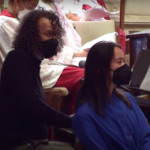
This is from Homecoming Sunday at All Saints Church in Pasadena. It was such an honor to be a part of this celebration. The camera takes a while to find me and I’m singing behind a mask, but it’s a thrill when the choir comes in for the bridge. And if you listen through the sermon, Rev. Kinman weaves the lyric throughout and we reprise the song with the whole church to close it out! A gorgeous experience!
-->Autumn 2021: New Music Live Preview!
I’m really excited that at the beginning of the summer I was invited to play at The Grand Annex in San Pedro. I was able to debut a batch of new songs and rearrange some old favorites for an in-person audience for the first time in months. It was also the first time I’d played piano onstage for probably a few decades! Here’s “Reimagine,” a song I wrote thinking about what we were going to do when we emerged from this time of lockdown.
I’ll be releasing more music from this show very soon, so watch this space.
And, if you haven’t already, please join the mailing list to get announcements when the new music becomes available.
Mailing List Sign-Up (via MailChimp)
both fields required
This is what I want to be doing.
You know that career question, “Where would you like to be in five years?” It always intimidates me. I’m too busy putting out the current fires.
When I moved from Laurel Canyon to Beachwood Canyon about 5 years ago, the answer was, “playing small theaters, writing music for films, writing, and teaching.” I didn’t think a lot of that would happen emerging from a global pandemic that — as it has so many — touched me intimately.
And yet, on the week that California opens up, I’m playing a small theater, on a stage with a grand piano and a few guitars, so eager to share what’s developed from the past year. I’ve been writing music for short films, engaging in deep conversation/writing about cultural reckoning in the US, and teaching. I’ve learned so much.
This won’t be the pandemic show though, of course. It’s part of the Roots and Rambles series that received an NEA grant to explore cultural underpinnings of American music. The show will be a celebration of life and other joys, with new songs and old. I’m just so happy to be doing it. I’m happy that the grant required an educational component, so we were able to do a songwriting workshop on Memorial Weekend.
I’m grateful.
I don’t know where all this goes. What fires will emerge? I do know, however, that this Friday will be special.
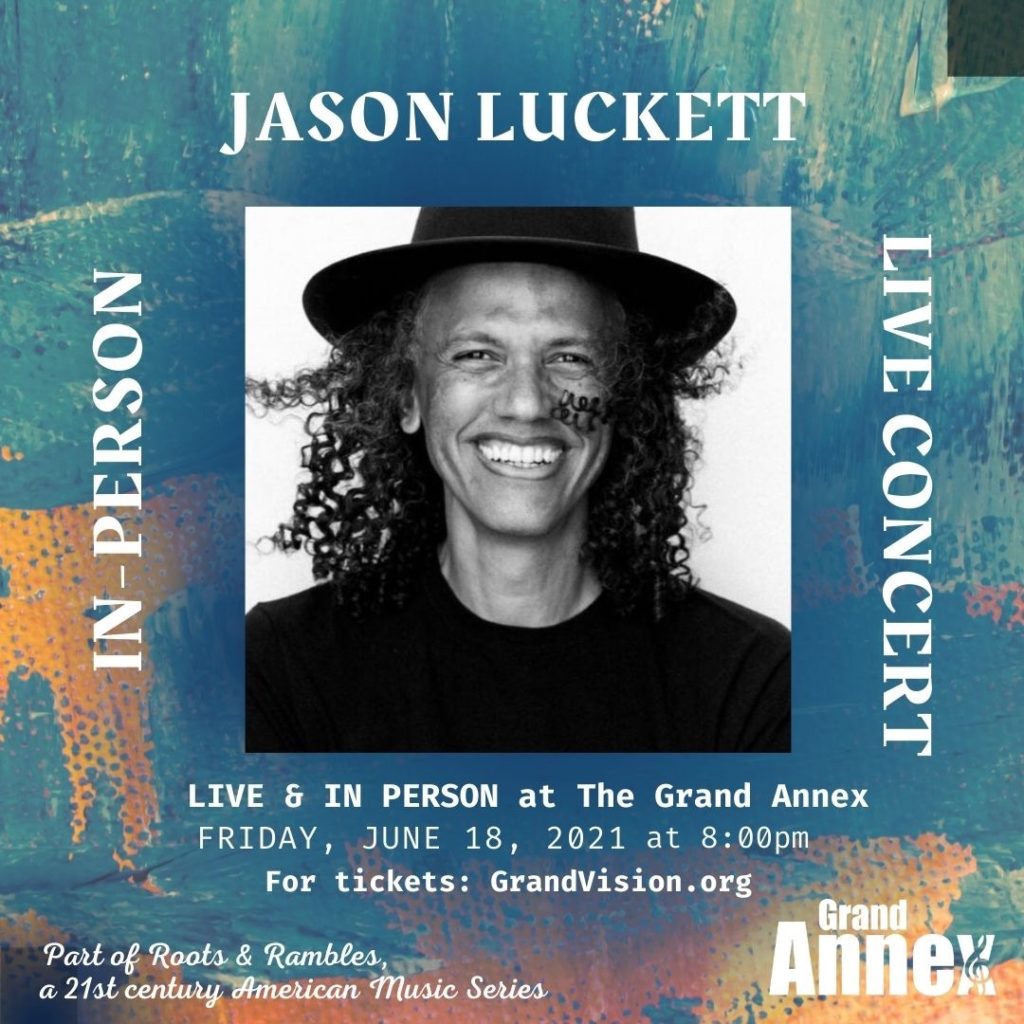
If you’re able to come, please get your tickets in advance here: https://www.grandvision.org/calendar-details.asp?id=1417
If you’re unable to come, please stay in touch and spread the word if you think someone else might be interested.
Finally, especially for those who can’t make it on Friday, I took part in an online tribute to singer/songwriter Harry Nilsson to celebrate his 80th birthday. Enjoy the whole Harry affair here. I’m smack dab in the middle singing his song “Perfect Day” which you can see here. I’m just singing into my phone from my studio, but Harry’s song captures the sweetness I feel when I get to share a night with you and friends.
Stay safe, stay engaged, hug when you feel able.
J
Jason Luckett / Roots and Rambles
June 18, 2021
Grand Annex
434 W. Sixth Street
San Pedro, CA 90731
(310) 833-4813
Doors open at 7:30
Show begins at 8
Video from All’s Well That Ends Well
This was a lot of fun to write. The whole show was good! Take a look at the videos here.
First Born, Beige Son
This piece was shared on July 12, 2020 with the Racial Justice Ministry at All Saints Church in Pasadena in a program called, “Beige in a Black & White World: What stories are helpful in this moment of urgency?” All Saints is a progressive Episcopal Church with a long history of leadership in social justice issues with a national reach.
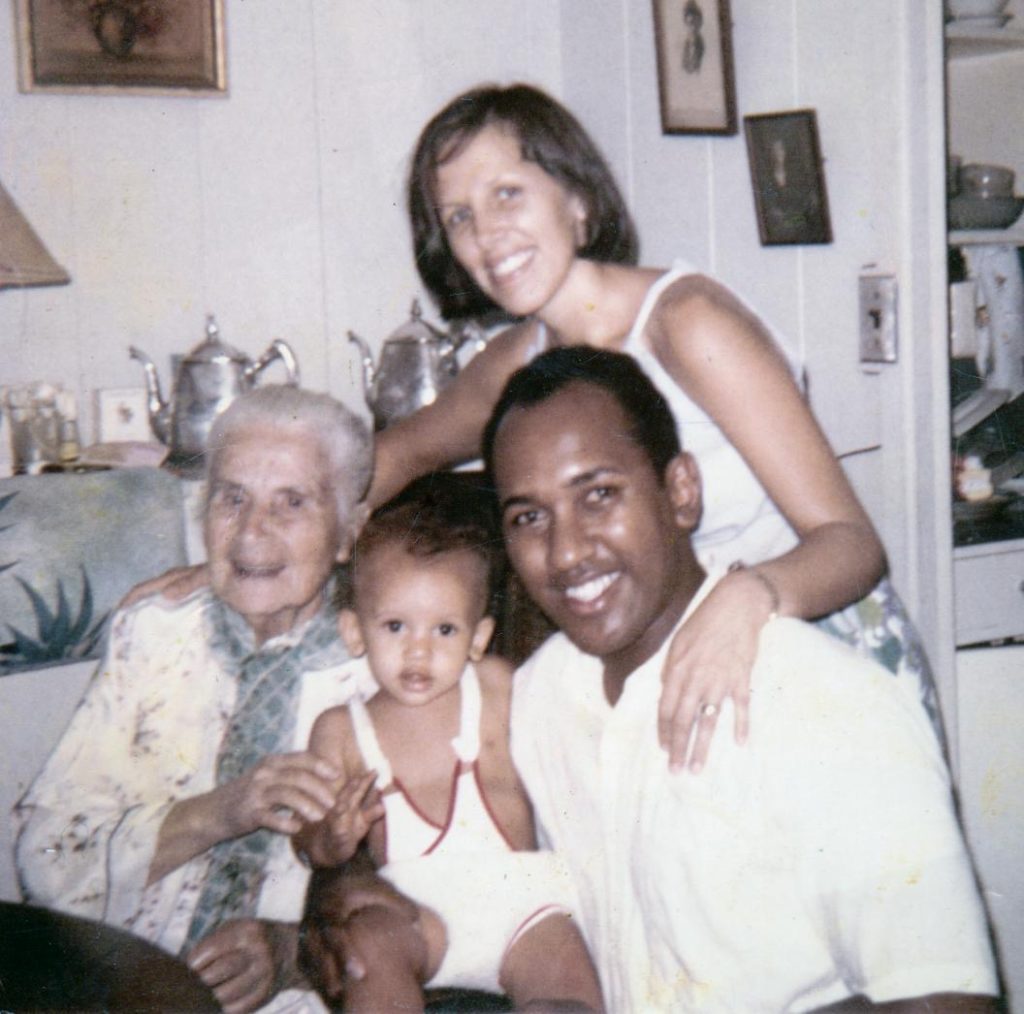
A white wall is intimidating. A black wall is complicated. A beige wall is easy to transform. You just apply a few strokes and it will sort of stick. It doesn’t require coats and coats of paint to reflect the color you want to see. Both black and white require layers of work to obscure the base. Beige seems easy.
But there are shades of beige. Some see it in the family of white. Some see it in the family of brown. But beige can be easily manipulated on a canvas where one can imagine forward a story in color.
I’m the first born, beige son of two psychotherapists, one white, one black. I’ve been splattered with paint all my life. All the while, I’ve tried to paint myself into a coherent image that withstands the sticky assaults.
I’ve been painted as a spokesman. I’ve been painted as the embodiment of “the problem.” I’ve been painted as an opportunist. I’ve been painted as lazy. I’ve been painted a thug. I’ve been painted a troublemaker. I’ve been painted as aloof. I’ve been painted as beautiful. Mixed babies are always so pretty! I’ve been painted as the future.
What I know is that I’m naturally a bridge. I acknowledge my white privilege, while also suffering directly from the oppression that comes with black identity in a “post-colonial” world. That is especially acute in the US, a country overwhelmingly funded by the exploitation of black bodies.
It’s a crappy world, but this dual-citizenship — or is it more of a Green Card? — has also given me a great bunch of laughs. I’m sure that comes mostly from the African-American tradition: Laughing through the pain, gives us strength to love.
But, oh that word “us,” that’s where I question my agency. That’s where I take a reporter’s stance, a spy’s view, a memoirist’s singularity. I speak in stories. I speak in interpersonal relationships that don’t carry the weight of a people or a culture as rules to follow. I operate from the stance that with interpersonal relationships we can combat the monoliths which hinder our freedom.
I urge actions that increase our freedom to love, that encourage our ability to connect, that allow us to enjoy our emotional and spiritual abundance. Monoliths are big. But the individual stories within the various monoliths combined are much bigger. I want to liberate those stories, to create a bridge for them to powerfully combine, to create a more open society for respect for humanity.
Of course, that all comes more easily when I’ve first painted myself as a coherent and reliable reporter. There’s also a matter of paint deflection to which I must attend…
— — — —
So what am I here to do today? Is it to affirm that I’ve been the subject of mistaken identity? The movie Hollywood Shuffle was real.
Is it to tell the story of how I felt free after leaving the largely white, conservative community of 1980s Irvine and used newly discovered beauty in “my ambiguous skin” to explore cultural and romantic connections, as I wrote about in an essay for “The Black Body” anthology a decade ago?
— — — —
Identity is shaped by memory.
In Irvine, I vaguely remember something of “The Talk” where black kids are taught how to act when encountering police officers. But mostly I remember my dad befriending the chief of police as a layer of protection for me. And I strongly remember Dad’s proclamation of what he’d do if anyone ever hurt me. I don’t actually remember what he did after I was beat up and called a nigger.
I don’t remember my dad taking me over to apologize to a white kid whose tooth I knocked out when I was nine. But that kid reached out to me online to remind me in adulthood. He said, “I should f***ing hate you, but I don’t,” as if I should congratulate him for that and for recognizing that he was upset that he shared the same last name as the officer who killed Eric Garner. He characterized my dad as “very large, very imposing…but with a tweed jacket and prescription eyeglasses.” For what it’s worth, that description landed on me, as if he were describing a tamed savage. Maybe if Eric Garner had that tweed coat and glasses, he’d still be with us?
I don’t remember the cops following me home to make sure I actually lived in my neighborhood, but that was one of the first things that came to my mom’s mind when I spoke to her about this presentation.
I do remember the cops calling my dad to pick me up at the police station when I got too drunk at a high school dance.
I didn’t remember graduating with highest honors from high school until a friend recently posted a photo on social media. I may have internalized that I got an “Affirmative Action” boost because there was an invitation to the Equal Opportunity Program when I arrived at UCLA. I’d been ambivalent about using it. Years after Shelby Steele and his people demonized Affirmative Action into abolishment in California’s higher education admissions, I felt maybe I got an “unfair” break.
I do remember running for office in college unopposed because everyone thought I had the white and the black vote sewn up as a (former) member of a “white” fraternity and because I was genetically part of, and friendly with, the “Third World Coalition.” (No, “people of color” wasn’t a term used in 1985.)
And I remember my former boss from the Black Music division of Warner Records driving me home from the airport a few years after we’d work together. He listened to my music as we drove. He said, “This would be great…if you looked like Tom Petty.” When my Nick Drake influenced track ended, embellished by a burst of Velvet Underground-styled feedback, another disc started in the trunk changer: a Boyz II Men clone. He continued, “Now here you’re doing something that can work!”
— — — —
What do any of these stories have to do with the immediate need of helping to dismantle the systemic racism that is disproportionately killing people of color in this county? Especially the people “darker than blue” to which Curtis Mayfield sang?
I feel that I can be helpful as a study of a man who has tried to come to terms with his male, cis-gendered, heterosexual, white and light-skinned privileges and found that nothing is lost by acknowledging these. The privilege doesn’t vanish when you name it, but you may find that you’re able to cede some ground lovingly. You may find it is a tool to use gracefully to empower someone else who’s hurting. And, you may find that giving up some of that unearned advantage, may actually make the world a less stressful place for you and everyone else.
It’s easier to speak to black people about structural racism than white people, but the conversation is fraught with pain in any context.
On Independence Day after seeing a smiling chokehold selfie of police officers at a memorial where Elijah McClain was killed, I wrote about the toxicity of white privilege:
“Unearned (or even unwanted) privilege isn’t the problem, it’s what you do with it.
To borrow a (problematic) phrase, “Guns don’t kill people, people kill people.”
Well, if you’re white, you’re born with a potentially deadly weapon on your person that can be accidentally, unknowingly, or willfully discharged, resulting in serious bodily harm and possibly death to people of color, and, of course, inflicting psychological harm.
I personally think guns should be licensed at least as strictly as driving.
Maybe those of us who are white need to be licensed. We need at least to acknowledge that we’re armed, with wealth and/or benefits that were built upon the subjugation of black people, on unpaid black labor, and on the foundation of white supremacy, which led to a dehumanization of black people, evidenced in community lynching parties, or in movies like “Birth of a Nation,” the George Floyd Challenge.… Or — to show the past is carved in stone — in the lionization in statues erected during Jim Crow of American traitors committed to slavery, which are in place today — well after they lost the war and the Union was preserved.
White people need to educate themselves about this history and not look to their “one or two black friends” to help them understand.
And if a black friend reaches out to you about what’s going on, listen to them. Don’t play devil’s advocate. There are enough people advocating for the devil already.
Advocate for compassion. Try to put yourselves in the shoes of the person of color speaking to you. Then understand that there’s a long story that’s gone into cobbling those shoes. Momentary design tweaks (pieces of legislation or one elected official) don’t negate a system that’s run largely as intended over 400 years.”
But, frankly, that statement is written to white people. It’s written knowing that there’s a white gaze. I’m sick of the white gaze. I feel like my story of being “Black in America” is easier to take in for white people because I’m also a White guy, a suburban son of the professional class, one generation out of the New England town where my Yankee family has been since before the American Revolution.
Am I lifting up, speaking with — and for — my black family — with its cloudy origins — as I stand undaunted, or at least strong enough to be radically vulnerable, sharing issues of racial discrimination, prejudice and unease?
I’m hopeful that this is helpful. In this urgent moment I tend more to listening and collaborating, than leadership. But, after listening and observing, I’m not afraid to share my perspective. If it’s going to be helpful, I actually think it’s my duty to speak up. If my sharing helps keep one black person from being killed, it’s worth my mistakes and mumbles. Even more than the white gaze, I’m sick of seeing my siblings of color die by prejudice and lack of resources.
In the late 60s, John & Yoko said during their “Bed-ins,” “We’re willing to be the world’s clowns, if that’s what it takes to promote peace.” I’m willing to appear awkward and strange, if that’s what it takes to save lives.
I’m curious how you perceive your story. Does it contribute to saving lives? What stories do? Where and when do you choose to speak? When do you choose to listen? And maybe even, when do you feel you need to opt out of the conversation? Does stepping away refresh you to come back to the conversation, or does it send you down a path toward isolation? And if isolated, how can you best be invited back in to create a beloved community?
-->“Revolver” US Version – The Beatles [ATCM]
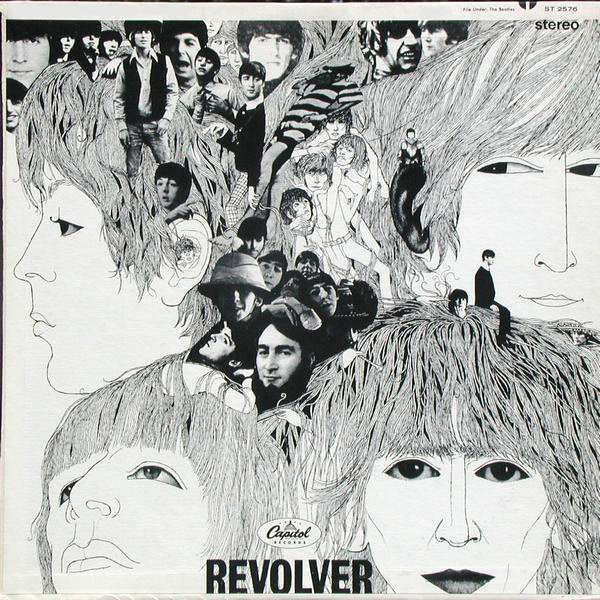
It’s hard to write about The Beatles. Two-plus hours musing on this record, and way too many words. It was one of my first favorite albums.
It’s an emotional rollercoaster.
John and George’s terrifying cosmic explorations: “There’s people standing round, who’ll screw you in the ground.” “I know what it’s like to be dead.” “Play the game existence to the end of the beginning.”
Paul devastates us with “Eleanor Rigby,” paints lovely dreams of shared bliss in “Here, There and Everywhere” and “Good Day Sunshine” then kills us again with “For No One” before bringing us back to hope with “Got to Get You into My Life.” (Only to wobbled at the close of the album by John’s “Tomorrow Never Knows.”)
Sandwiched in there is the diversion of Ringo singing a children’s psychedelic anthem of togetherness.
See, there’s really no room for “I’m Only Sleeping,” “Dr. Robert” or “And Your Bird Can Sing.” Those songs are fine on “Yesterday…and Today,” a US release that cobbled together tracks from the UK “Help,” “Rubber Soul” and “Revolver” albums with great singles (and gave us the infamous “butcher cover”).
The US “Rubber Soul” is different and maybe a little more compelling than the UK version (though with the songs left off the US edition, the acoustic framing lacks the R&B flavor referenced in the title).
But the US version of “Revolver” is simply better. It’s way more focused and innovative sounding. And it’s the first Beatles album I fell in love with.
Like the Elton John album I wrote about a couple days ago, the cover was a world unto itself, very mysterious. (I love that Klaus Voorman included a little picture of himself with his signature. It felt “behind the scenes!”) And the back cover, a dimly lit black and white photo with them wearing sunglasses indoors, looked like an outtake, the epitome of casual cool.
Maybe I responded to it so readily because I’d just moved from big city Los Angeles to sleepy suburban Irvine. The Beatles looked a bit detached, but the music was so rich and emotional. The weird intro count on Taxman, the cough, the tight groove, and the cataclysmic guitar solo. The lovely lonely people, as I heard it. I could be lonely and still lovely in my new town! (Mishearing lyrics is a gift.)
I’ve had many different favorite songs from this album at different times in my life. I love that it goes so many places sonically, and conceptually. And it’s not a concept album. Its perfection almost seems to be happenstance. And I’d argue it was for the band itself in this form. It was sequenced from a less impactful grouping with the usually agreed upon song allocations that the band had chosen in the UK.
It’s filled with possibilities and the scariness that comes from death and life’s cycles (death and taxes!), from the mundane to the surreal.
I was scared as a nine-year-old, but awed by the possibilities of the space of Irvine and the world of music that was opening to me as I started playing guitar from morning to night, writing songs to combat the loneliness of being the new “different looking” kid in town. This album gave me everything I needed.
-->“Shadows and Light” – Joni Mitchell [ATCM]
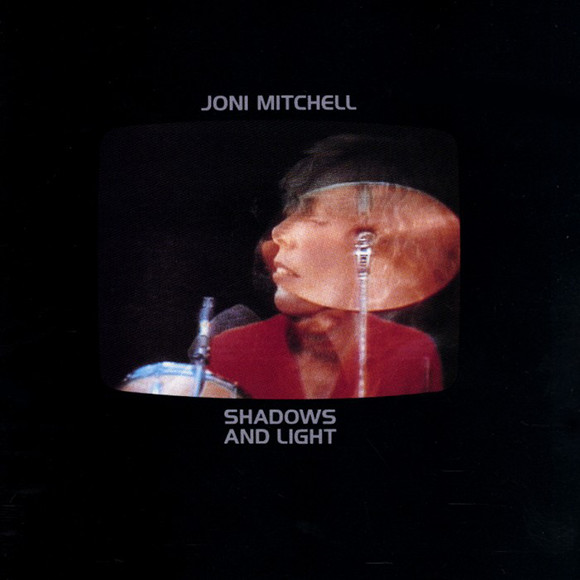
In the days before you could carry your music collection everywhere, two records that went with me on every road trip, were Bob Dylan’s “Blood on the Tracks” and Joni Mitchell’s “Hejira.” I conflate them in a way not only because the opening two chord groove of “Tangled Up in Blue” and “Coyote” are really similar, but because both albums are a couple years past the hit-making eras for both of them, but they’re really solidly crafted in a purposeful way, more concise and intimate than the records that preceded or followed. For Dylan, “Blood…” followed “Planet Waves” and preceded “Desire.” For Mitchell, “Hejira” followed “The Hissing of Summer Lawns” and preceded the double LP, “Don Juan’s Reckless Daughter.” I like all of those records, but they don’t feel as focused or well executed.
You can’t really call “Shadows and Light” a tightly focused record. It’s live, for one. It starts with a bit of “Shadows and Light” from “…Summer Lawns” interspersed with film clip audio from “Rebel Without a Cause,” and other elements, then a blunt cut in the middle of applause to “In France They Kiss on Main Street,” also from “Summer Lawns.” But that’s where the magic begins!
This is not your regular pop/folk Laurel Canyon band. It’s Pat Metheny on lead guitar, Lyle Mays on keys, Don Alias on drums, Michael Brecker on sax, and the great Jaco Pastorius on bass. Along with Joni’s brilliant alternate guitar tunings and the choice to use electric guitar more that acoustic, Jaco was the sound of the three studio albums preceding this concert. And this culminated with “Mingus,” an album written with the legendary bassist and composer, Charles Mingus, the album this tour supported.
I love Mingus! I love the Pat Metheny Group! Jaco’s “Word of Mouth” album is one of my all time favorite records! And I freakin’ love Joni! This album had them all!
But it was the first time that I’d heard them combined.
I have Sheldon Gomberg to thank for this. I was looking to put a new band together at one point and drove from Culver City out to Sheldon’s place in Silverlake to meet him. The way I remember it, he was outside on his landing practicing upright bass along with this album. I recognized the guitar on “In France….” It starts almost identically to “Coyote” but then the bass came in swinging, unlike the more atmospheric parts on “Coyote.” That surprise delighted me, then all of a sudden Pat Metheny shows up. It was, “You like this? I’m going to double your pleasure. Now I’m going to double it again.”
Sheldon had an import CD and it wasn’t available domestically at the time, so that made it even more of a rare treat. And there was film of this show out there somewhere, but again, not available readily. Years went by before I was to actually own the album and see the film.
But it didn’t take years for the inspiration to kick in. I soon drafted Todd Sickafoose and Mark Ferber from the UCLA jazz studies program into my band, along with Gustavo Aguilar from CalArts to join my stalwart keyboard player for all my bands to that point, Jebin Bruni “Singer-songwriter” music didn’t have to be folk or rock based. It could be anything you wanted to explore with the best creative musicians you could find.
What I love about Joni’s lead on this, it that she really led. Like Miles Davis, she allowed her musicians to be themselves in their roles, but she was clearly the visionary. And when it came time for her to take a solo turn to close the show on “Woodstock,” she owns it (and it’s a totally different interpretation than the version on “Ladies of the Canyon,” or “Miles of Aisles”).
I think singers in bands often have a musical inferiority complex. We think we’re the least talented “musician” in the band, even if we’re the chief songwriter. That could just be my impression from starting out as a kid guitar player and thinking my band’s singer was the worst “musician” in the band. 😂 But when I decided I wanted to focus on songwriting instead of playing lead guitar, I started to feel like I was always the weakest technical link. Joni seems to have had none of that and owned her strength among other masters.
The original task of this list was to select albums that influenced your taste in music. What this album taught me was that all of my tastes could be combined, that songs could dramatically be re-approached, working with those outside your “genre” was nothing to worry about, and that the singer can own his/her/their validity.
And, damn, this album makes me so happy every time I hear it. It’s the sound of artistic freedom.
“Captain Fantastic and the Brown Dirt Cowboy” – Elton John [ATCM]
Two songs on this album are almost always guaranteed to make me cry. Of course, the only hit from the record, “Someone Saved My Life Tonight,” is one. The other is “Writing” and that one is tears of joy and hope. It gets me every time.
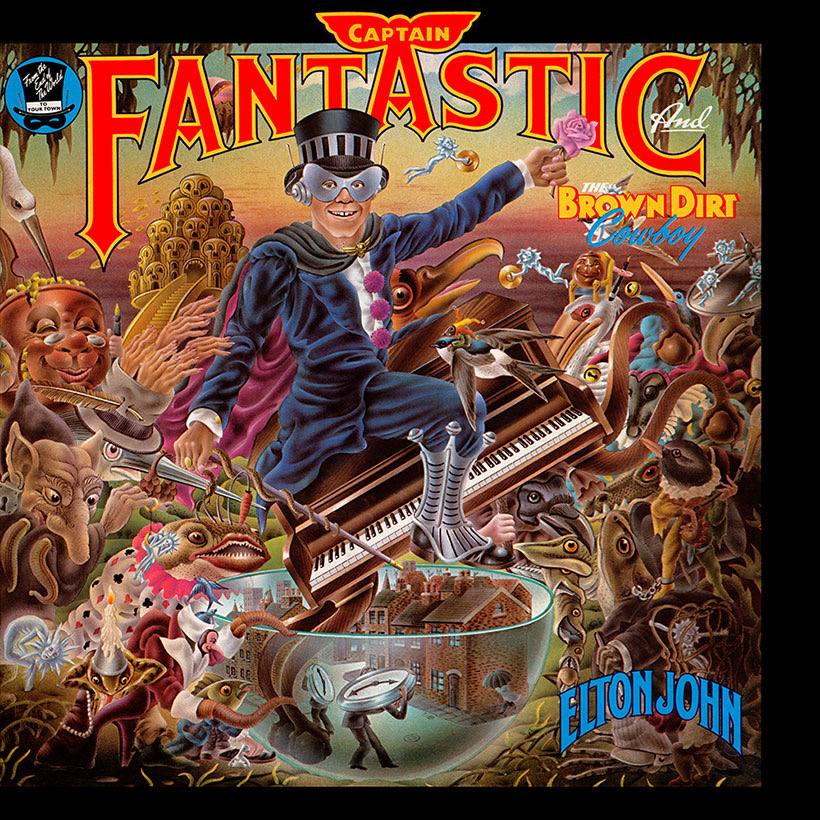
Like the movie “Rocketman” opened my mind to the song, “I’m Still Standing,” “Captain Fantastic” opened me to Elton John. I know, I wasn’t even into double digits in age when this came out, but I already had serious thoughts about music and Elton John was a pop phenomenon, too flashy for my tastes. I was all about The Beatles, The Who, and more introspective singer-songwriters at that moment. My favorite song trajectory was Lynn Anderson’s “I Never Promised You a Rose Garden,” The Jackson 5’s “ABC,” The Carpenters’ “On Top of the World,” Al Wilson’s “Show and Tell,” and my first two jukebox picks, Paul Simon’s “Kodachrome,” and “Pinball Wizard” from The Who. A good mix of fluff and a little more artful stuff.
Then the “Hey Jude” album and “Revolver” given to me by my babysitter sometime in 1974 set me down a Beatles rabbit hole that I pretty much still live in. EJ’s popularity was encroaching on The Beatles cultural domination and I was having none of it.
“Captain Fantastic” changed all of that. First, it was that big fat chord (with the 5th in the bass) that opens “Someone Saved My Life” that got me when it played on the radio. Then it was crazy album cover that was illustrated by Alan Aldridge, the same guy who did “The Beatles Illustrated Lyrics” book. I think I got my dad to buy the record for me, but I remember my friend, Dave Anderson, and I listening to it over at his house and marveling at the artwork. There was some nudity and that probably piqued our interest, too! How bold! (haha)
But opening the record was an experience. It not only contained a comic book sized illustrated lyric book, but another book that told Elton and Bernie’s story. And it all lined up with the autobiographical nature of the songs. I probably also responded to the really sweet story of two friends from different backgrounds sharing their lives. Even more impressive was that only one of them wrote the words, but it captured two perspectives so well.
The whole album is epic, but the title song is especially cinematic, going musically and lyrically from suburban and countryside English homes to hope of adolescence, ugliness in the city to a creative flowering, then the naked ambition to go “From the end of the world to your town!”
But “Writing” is my absolute favorite. I don’t know that I really noticed it much in my single digits. But as I got older, this song expressed the joys of free creativity, before the pressure of “professional” performance better than any song I know. There’s seriousness and doubt, of course: “Will the things we wrote today sound as good tomorrow.” Every songwriter knows that feeling whether concerned with legacy or just wondering if you’ll like what you came up after giving it space.
Though this is the part that gets me about the craft and the passion:
“We could stretch our legs if we’d half a mind
But don’t disturb us if you hear us trying
To instigate the structure of another line or two
‘Cause writing’s lighting up
And I like life enough
To see it through
‘Cause writing’s lighting up
And I like life enough
To see it through”
———
I like life enough to see it through! That’s it!
Then the suicidal ideation in “Someone Save My Life Tonight” becomes even more poignant. Especially seeing those guys together still after all these years.
I couldn’t love this album more.
———
I did see the Jackson 5 when I was 5, but this album led me to beg to go to my first “adult” concert. Before we got to Dodger Stadium, my dad said, “Wake me up when he plays ‘Bennie and the Jets.’” (Which is why I always loved that Branford Marsalis, in the Sting film “Bring on the Night,” names that song as the rock song that black people knew.) The fact is Dad’s best childhood friend from Mississippi was actually the stage manager at the Troubadour in the early 70s when Elton made his US debut, and Pops loved the eponymous “Elton John” record. If I were doing 100 records that’d definitely have to be dissected…
-->“Life’s a Riot with Spy vs. Spy” – Billy Bragg / “Suzanne Vega” [ATCM]
This is a twofer: “Life’s a Riot with Spy vs. Spy” by Billy Bragg, and Suzanne Vega’s self-titled debut. I think the Vega album was probably more influential for me, but it’s pretty close. Both purchases were the result of seeing them live. I was able to immediately get the Vega record, but the Billy Bragg record took me ages to find. The reason was that I was looking for an album called “F**k me, I’m Famous,” which, of course didn’t exist.
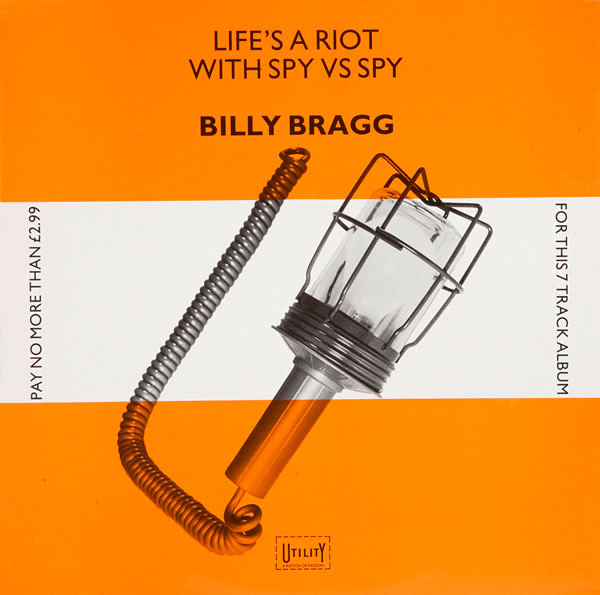
I started the school year seeing Echo & the Bunnymen play at Irvine Meadows. But first onstage that night was a guy alone, who sounded like a one guitar Clash. He introduced the set saying, “This is off my new album, “F**k me, I’m Famous” and he played “New England” with the chorus, “I don’t want to change the world / I’m not looking for a new England / I’m just looking for another girl.” Myself band-less … exhausted by the politics of the day … I was hooked! But I could never find that stupid album! My other favorite lyric from that song is, “I saw two shooting stars that night / I wished on the them, but they were only satellites / It’s wrong to wish on space hardware / I wish, I wish, I wish you cared!”
At the end of the year, Suzanne Vega shows up for a noon concert at Ackerman Union. Another artist completely alone with a guitar, but quieter. It felt more portable. Her voice reminded me of Astrud Gilberto, pure, vibrato-less, intimate. In fact it was practically speak-singing, maybe Lou Reed influenced, maybe Laurie Anderson. And it was really bedroom music, songs told from and to those walls. Perfect for the disguised introvert that I am. “Cracking” opens the album with “It’s a one time thing…it just happens a lot,” and the last line of that song is “Wondering where the hell I have been.”
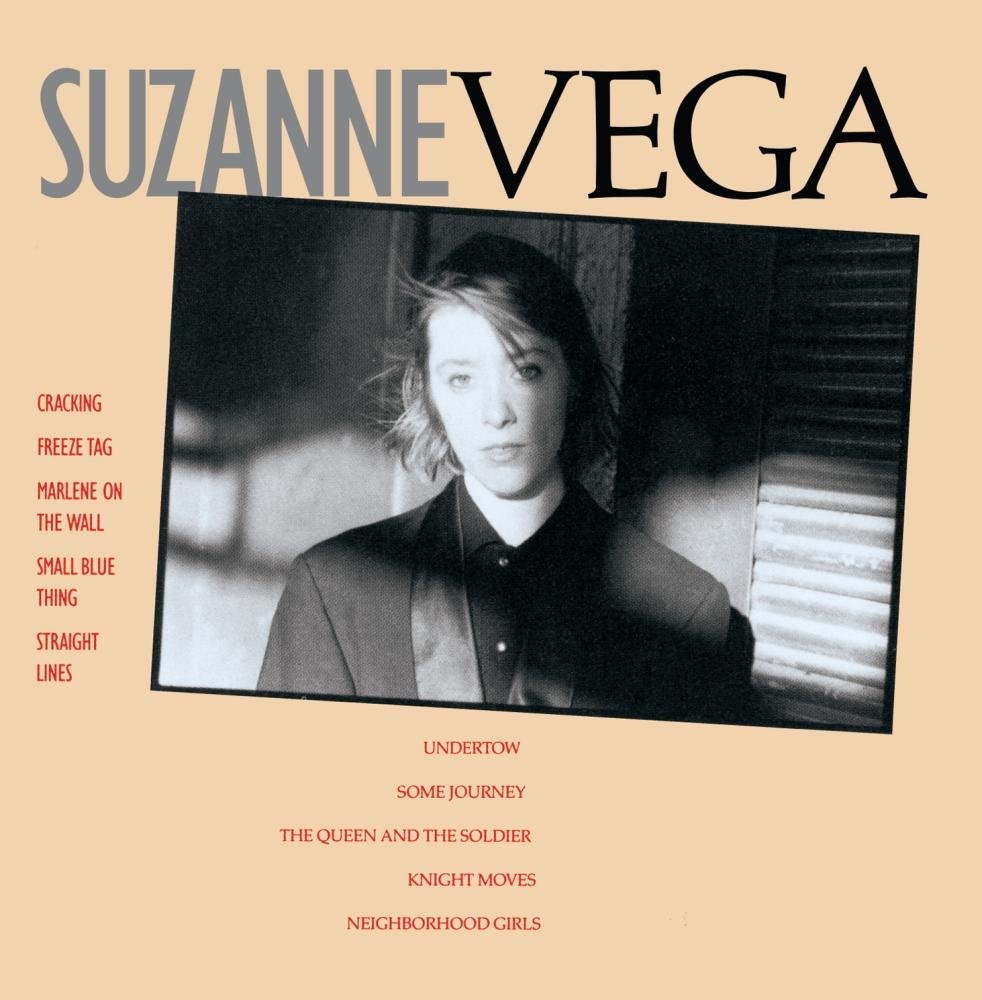
“New England” and “Cracking” are like two sides of the same story, the disappointment of satellites and leaping for the “one time” repeatedly, then losing all sense of direction. It fit perfectly with the annual reinvention I felt as a freshman, sophomore, junior, then senior.
And of course, the simplicity of the format, that’s what got me through college and into my career. I took one acoustic and one electric guitar to England after graduation and played on the street to extend my wandering. I had my Billy Bragg cassette with me. Not only did Billy have printed on the cover that you shouldn’t pay more than £2.99 for the record, but the opposite side of the cassette was left blank and recordable to “Bootleg the Bragg, confuse the enemy!” Of course, on that blank side, I recorded some of my own songs in tunnels by the canals in Venice.
Tying things up, the first and only time I played CBGB’s, Lenny Kaye was an invited guest of my publisher which thrilled the hell out of me not only because of Patti Smith, but also because he produced “Suzanne Vega.” He was with Seymour Stein, and couldn’t have been nicer. (Seymour and I argued about my song, “Jackson, Mississippi,” but that’s a story for another day.)
A couple years later I was in London and did some recording with Billy Bragg’s guitar tech/bestie, Wiggy who introduced me to the world of Cockney rhyming slang.
Regarding impact, the reason “Suzanne Vega” had more of an influence at that time was that I’d been invested in the lane of Dylan to Strummer from where it seemed Billy Bragg emerged. Suzanne Vega, led me deeper into Joni Mitchell, probably prepared me for Nick Drake, and when I heard Lou Reed’s “New York” a few years later, I was truly ready to dive down that glorious Velvet Underground rabbit hole.
-->